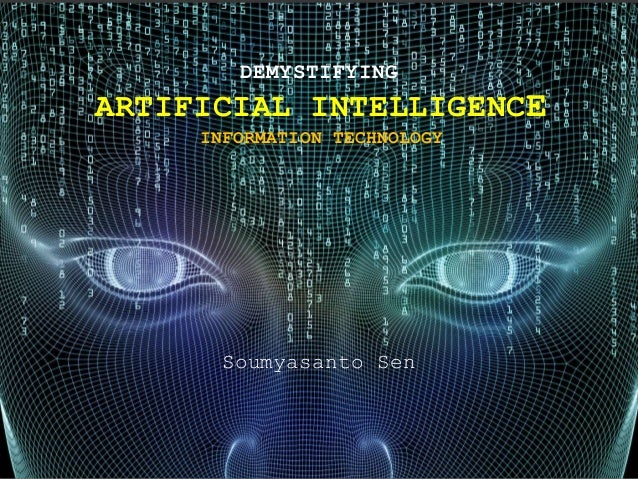Information Technology Artificial Intelligence:--
 |
| Information Technology Artificial Intelligence And History |
Artificial intelligence (AI) is the simulation of human intelligence processes by machines, especially computer systems. Specific applications of AI include expert systems, natural language processing (NLP), speech recognition and machine vision.
History
Thought-capable artificial beings appeared as storytelling devices in antiquity, and have been common in fiction, as in Mary Shelley's Frankenstein or Karl Capek's R.U.R. (Possum's Universal Robots). These characters and their fates raised many of the same issues now discussed in the ethics of artificial intelligence.
The study of mechanical or "formal" reasoning began with philosophers and mathematicians in antiquity. The study of mathematical logic led directly to Alan Turing's theory of computation, which suggested that a machine, by shuffling symbols as simple as "0" and "1", could simulate any conceivable act of mathematical deduction. This insight, that digital computers can simulate any process of formal reasoning, is known as the Church–Turing thesis. Along with concurrent discoveries in neurology, information theory and cybernetics, this led researchers to consider the possibility of building an electronic brain. Turing proposed changing the question from whether a machine was intelligent, to "whether or not it is possible for machinery to show intelligent behavior". The first work that is now generally recognized as AI was McCullough and Pitts' 1943 formal design for Turing-complete "artificial neurons".
They neglected to perceive the trouble of a portion of the rest of the undertakings. Progress eased back and in 1974, because of the analysis of Sir James Lighthill and continuous weight from the US Congress to support more profitable undertakings, both the U.S. what's more, British governments cut off exploratory examination in AI. The following scarcely any years would later be called a "simulated intelligence winter", a period when acquiring subsidizing for AI ventures was troublesome.
In the mid 1980s, AI research was restored by the business accomplishment of master frameworks, a type of AI program that reenacted the information and investigative abilities of human specialists. By 1985, the market for AI had reached over a billion dollars. Simultaneously, Japan's fifth era PC venture roused the U.S and British governments to reestablish subsidizing for scholarly examination. Nonetheless, starting with the breakdown of the Lisp Machine market in 1987, AI by and by fell into notoriety, and a second, longer-enduring rest started.
The advancement of metal–oxide–semiconductor (MOS) exceptionally huge scope combination (VLSI), as integral MOS (CMOS) semiconductor innovation, empowered the improvement of down to earth counterfeit neural system (ANN) innovation during the 1980s. A milestone distribution in the field was the 1989 book Analog VLSI Implementation of Neural Systems via Carver A. Mead and Mohammed Ismail.
Artificial Intelligence is Changing the Information
 |
| Artificial Intelligence |
Demystifying artificial intelligence information technology
 |
| Information Technology Artificial Intelligence And History |





0 Comments
Thanks You....